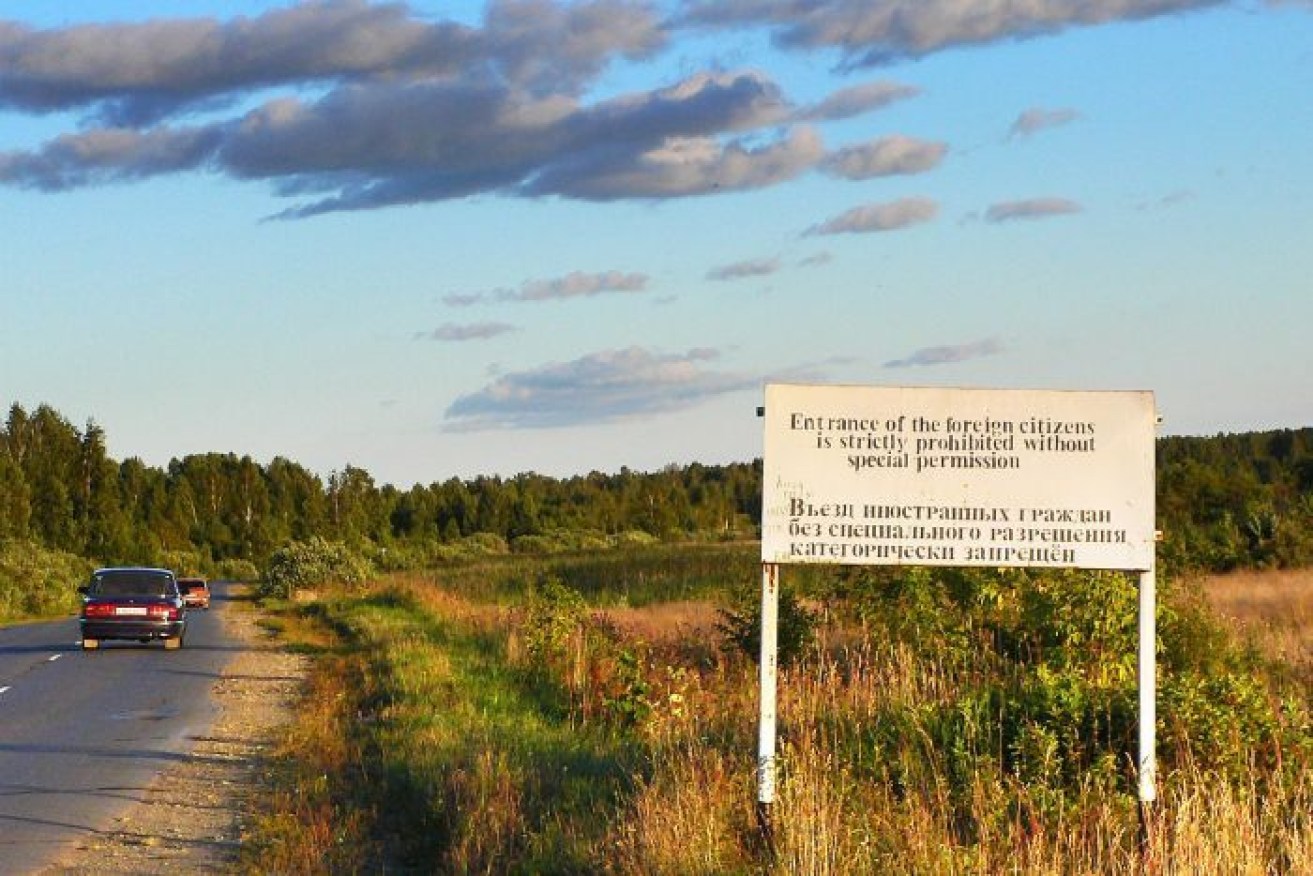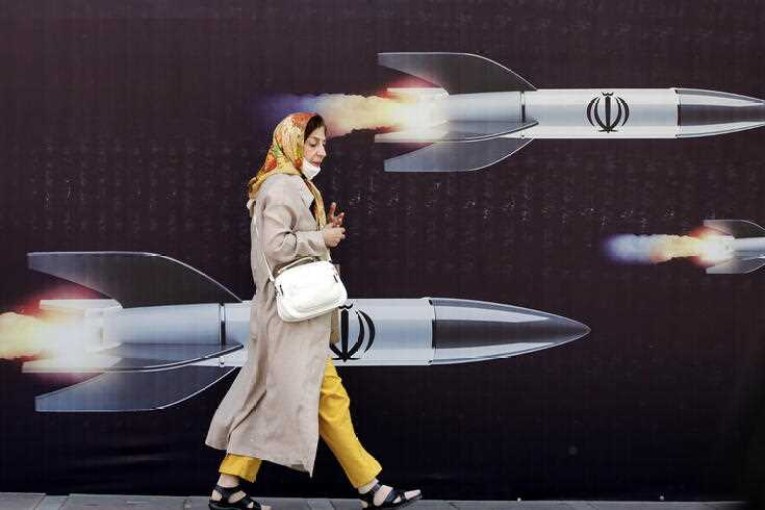Russia’s closed cities hold the secrets to global nuclear disasters you’ve never heard of

Foreign entry into Russia's closed cities is strictly prohibited. Photo: Wikimedia Commons: Ecodefense
The lack of information from the Russian Government following the deadly explosion on August 8 has some questioning whether the situation might be worse than originally thought.
But it makes sense why Russia might be vague on the detail.
Both the city near the accident site, Severodvinsk, and the one where the victims were buried, Sarov, are “closed cities” – highly controlled areas that house the country’s most important weapons sites.
The Government does not want outsiders knowing what goes on there, especially when accidents happen.
And when accidents do happen in closed cities, like a radioactive explosion or an outbreak of anthrax, Russia has a long history of covering them up.

The closed city of Ozyorsk was the birthplace of the Soviet nuclear program. Photo: Wikimedia Commons: Ecodefense
Introducing ZATOs, Russia’s closed cities
Russia is far from the only country to have closed cities, but it does have a lot of them.
It’s thought there are about 40 closed cities in Russia, though it’s suspected there are others whose very existence is highly classified.
First established in the 1940s, closed cities – officially known by the acronym ZATO in Russian – are most often associated with either military installations or major research centres and are used to house employees and their families.
For example, Sarov, where the five scientists killed in the explosion were buried, is the site of a nuclear weapons design facility.
It’s been a closed city since 1946, when it was renamed Arzamas-16 and its location was removed from all unclassified maps.
The movement of people and information in and out of these cities is highly restricted, and residents are often not allowed to disclose where they live to outsiders.
“There’s levels of security inside levels of security, it’s like a series of concentric circles,” Kate Brown, MIT Professor of Science, Technology and Society, told the ABC.
“And when you have those it is easy to gloss over problems, perhaps cover up accidents, there’s not a lot of ways for information to get out.”

A man walks next to his house in the village of Muslyumovo. Photo: AAP
The nuclear disaster you probably haven’t heard of
While Chernobyl and Fukushima might be synonymous with nuclear disasters, that might not be the case for Kyshtym.
It was the third most-serious nuclear accident ever recorded, and it happened at the Mayak facility in the closed city of Ozyorsk, in Russia’s Ural Mountains, in 1957.
A cooling system in a radioactive waste tank broke down and the rise in temperature resulted in an explosion that released an estimated 20 million curies of radioactivity into the environment.
During the Chernobyl explosion, about 50–200 million curies of radioactivity was estimated to have been released.
The Kyshtym disaster contaminated an area up to 20,000 square kilometres, known as the East-Ural Radioactive Trace, and thousands of people near the plant were evacuated.

The Soviet government didn’t acknowledge the East-Ural Radioactive Trace for 32 years. Photo: Wikimedia Commons: Jan Rieke
But the Soviet government didn’t publicly acknowledge the accident until 1989.
“The incident was happening at the time of the Cold War so it was also an attempt by the Soviet authorities to prevent the news from reaching the outside world,” Alexey Muraviev, a specialist in Russian strategic and defence policy at Curtin University, told the ABC.
But the area had been contaminated even before the Kyshtym disaster, when high-level radioactive waste from the production of plutonium at Mayak had been intentionally dumped into the nearby Techa river.
“They put about 3.2 million curies into that small river, and the people who lived downstream drank from it, swam in it, ate from it, fished in it, watered their crops in it,” Professor Brown said.
“Twenty-eight communities live down that river, several tens of thousands of people, and they didn’t tell anybody that they were putting high-level waste [in the river].”
Mayak now serves as a reprocessing plant for spent radioactive fuel.
In October 2017, a network of monitoring sites picked up a cloud of radioactive material, Ruthenium-106, above Europe.

Greenpeace employees sample water in the Techa River – one of Russia’s most lethal nuclear dumping grounds. Photo: AAP
In a report published just last month, a team of scientists say the most likely source was a fire or explosion at Mayak that occurred during the reprocessing of spent fuel to create enriched caesium for an Italian laboratory.
Russia’s nuclear energy agency continues to deny anything happened at Mayak in 2017, but at the time, the Russian Meteorological Service admitted there was “extremely high contamination” in the air around the Ural mountains.
And it’s not just nuclear accidents that happen at closed cities.
In 1979, spores of anthrax leaked from a biological weapons facility in the closed city of Sverdlovsk and killed at least 68 people, many of whom were civilians from a nearby ceramics plant.
The Soviet government blamed the deaths on the consumption of contaminated meat, and it was only in 1992 that then-president Boris Yeltsin publicly linked the anthrax outbreak with the military facility.

Russians could avoid austere living conditions by moving to ZATOs in the Soviet era. Photo: Picryl: Arianne Kouri
‘People could buy anything they wanted’
While some have a bad safety reputation, there’s a big reason why Russians might want to move to a closed city: they’ve historically gotten the best of everything.
As part of the privileges of working on important, secret and dangerous processes, residents are promised a higher standard of living and better resources.
During the Soviet era, those who lived in closed cities were spared the austerity of other parts of the country.
“So there were no problems with, for example, food supplies; people could buy anything they wanted,” Dr Muraviev said.
“They also provided better living conditions, so people who would work at closed cities would be guaranteed state funding accommodation and so on.”
The reputation of the living standards and privileges of those cities meant the jobs that would allow you to move to one were highly sought after.
“This is an important element, otherwise it sounds like [closed cities] are like a giant concentration camp,” Dr Muraviev said.

Russian president Vladimir Putin has sought to rebuild Russian military might. Photo: AAP
And according to Dr Muraviev, Russian President Vladimir Putin has been actively trying to restore the glamour of the country’s remaining closed cities.
“Back in the 1990s those privileges kind of really lapsed, so there were no incentives anymore, but now they’re sort of back on the agenda and the Government is really pumping funds into these cities,” he said.
“That’s part of [Mr Putin’s] strategy to rebuild Russia’s national security as well as rebuild Russia’s national defence capability.”
And as far as the risks go of moving to a secretive town next to a nuclear facility or a military installation?
Dr Muraviev said the people who chose to move to closed cities knew what came with the job.
“They understand risks associated with it and they’re not just doing it for money; they’re also doing it for the idea of making Russia safe,” he said.








